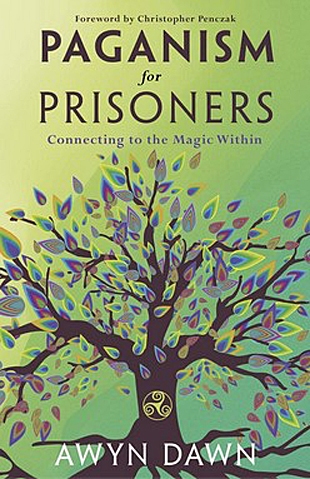“Witchcraft saved my life, quite literally. I spent nearly a decade of my adult life living in active addiction,” begins this book of wisdom from a woman who discovered her path while serving time in a Colorado prison.
The prison had a library, and she read all of the books they had on Wicca. She also met with two Wiccan chaplains who regularly visited the prison. They provided “anything from birth charts to tarot card readings to a shoulder to cry on.” When she was released, she studied with a high priestess, and then a few years later, she began visiting the Department of Corrections monthly with one of the chaplains who had helped her. Dawn teaches the inmates the Pagan path, and she explains, they teach her.
For several years, Dawn has been explaining elements, divination, intuition, rituals, devotions, symbols, animal helpers, ethics in magic, the wheel of the year, and the afterlife to prisoners, and in this book she summarizes these teachings in the ways of an excellent communicator. The language is broad and accessible.
When she explains the audience she has monthly at the Department of Corrections, she is also explaining the ideal audience for her book: “I welcome those of any faith to attend, as long as they remain respectful. So, right alongside those who identify as Northwest European Pagan are those who call themselves Asatru or Druid or those who walk the Native American paths, and even those who are unsure or who are curious Christians.”
Always, she applies the teachings to people behind bars. For example, on the subject of “Deity Representation” and using a personal altar, she encourages her special readers like this: “Your facility may or may not allow you to have actual statues. Some facilities will allow items in a group property box, but not allow an individual to possess the same item. Deity representations do not have to be complex though. As long as you know who or what is being represented, then that is what matters.”
There are thirteen chapters or lessons. She explains, “This is designed to allow one lesson per month and thus span the length of a year-and-a-day, the traditional length of time to study before initiation.”
